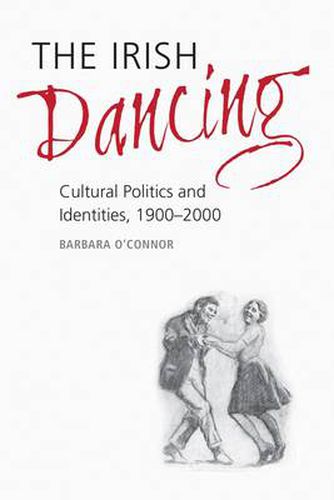Readings Newsletter
Become a Readings Member to make your shopping experience even easier.
Sign in or sign up for free!
You’re not far away from qualifying for FREE standard shipping within Australia
You’ve qualified for FREE standard shipping within Australia
The cart is loading…






This book engages with the role of dance in Irish culture and society over the course of the twentieth century. The book adopts a perspective that sees dance as a prism through which to view key aspects of Irish society over the period under review. Partly thematic, partly chronological this account of dance in Ireland emerges out of a broader interest in the body in society as well as in the construction of national and gender identities. It comprises seven chapters each of which addresses a particular form of cultural identity. These include national, ethnic, gender, social - class, postmodern and global identities. It is structured in such a way that many of the chapters are devoted to a specific identity formation while issues of gender and social class are interwoven into most chapters. Apart from the last chapter on stage/theatrical dance, the book’s main focus is on social/recreational dance. Underpinning the discussion throughout is the assumption that dance both reflects and produces the social, cultural and politic contexts within which it is performed and represented. This is so because bodily movement including dance reflects societal structures, norms and values as attested to by sociologists and dance scholars alike. Interwoven into the dance narrative, therefore, is the ‘flow’ of Irish society over this time; a flow that incorporates social stability and social change, tradition and modernity, men and women, rural and urban, as well as the local, the national and the global.
$9.00 standard shipping within Australia
FREE standard shipping within Australia for orders over $100.00
Express & International shipping calculated at checkout
This book engages with the role of dance in Irish culture and society over the course of the twentieth century. The book adopts a perspective that sees dance as a prism through which to view key aspects of Irish society over the period under review. Partly thematic, partly chronological this account of dance in Ireland emerges out of a broader interest in the body in society as well as in the construction of national and gender identities. It comprises seven chapters each of which addresses a particular form of cultural identity. These include national, ethnic, gender, social - class, postmodern and global identities. It is structured in such a way that many of the chapters are devoted to a specific identity formation while issues of gender and social class are interwoven into most chapters. Apart from the last chapter on stage/theatrical dance, the book’s main focus is on social/recreational dance. Underpinning the discussion throughout is the assumption that dance both reflects and produces the social, cultural and politic contexts within which it is performed and represented. This is so because bodily movement including dance reflects societal structures, norms and values as attested to by sociologists and dance scholars alike. Interwoven into the dance narrative, therefore, is the ‘flow’ of Irish society over this time; a flow that incorporates social stability and social change, tradition and modernity, men and women, rural and urban, as well as the local, the national and the global.